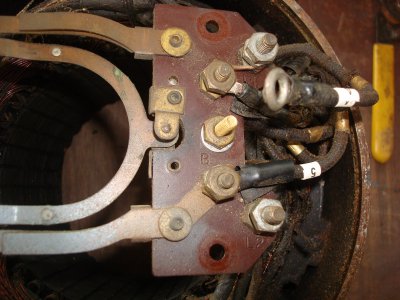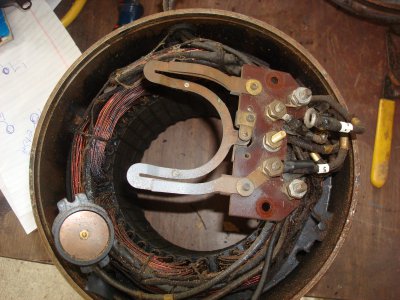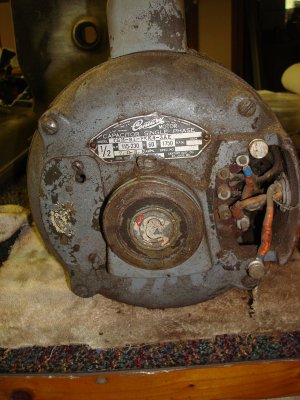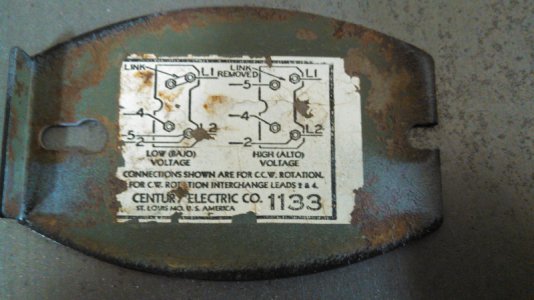Guys as much as I like old machines I also like the old motors that come with them.And like the machine they come on they have their own problems,mostly wiring them correctly.I usually take them apart give it a good cleaning,replacing bearings and check the connections.I have this Century 1/2hp motor 1725 rpms that can be wired either 120/240 volts either CW/CCW rotation.It also has the centrifical switch w/thermal overloads.When I pick this up it had been setting for afew yrs and the history on it was limited/none,so I don't know if the PO had it wired for 220 volts or 120 volts but I would like to wire it for 120 volts.I did plug it in just to see if it would at lease rotate and it did but the terimal end of the motor got warm in just afew seconds,I have to say it does have some torque.If you will take alook at the pixs and see what you think?I ask Mr. Google for some help but not much help/hope,then again maybe I'm using the wrong words.So any advise,directions,diagrams,etc please send them my way.Thanks ---kroll
- - - Updated - - -
Here's a diagram of a motor that does not have the thermal overloads,maybe this will help to come up with a game plan---kroll




- - - Updated - - -
Here's a diagram of a motor that does not have the thermal overloads,maybe this will help to come up with a game plan---kroll





